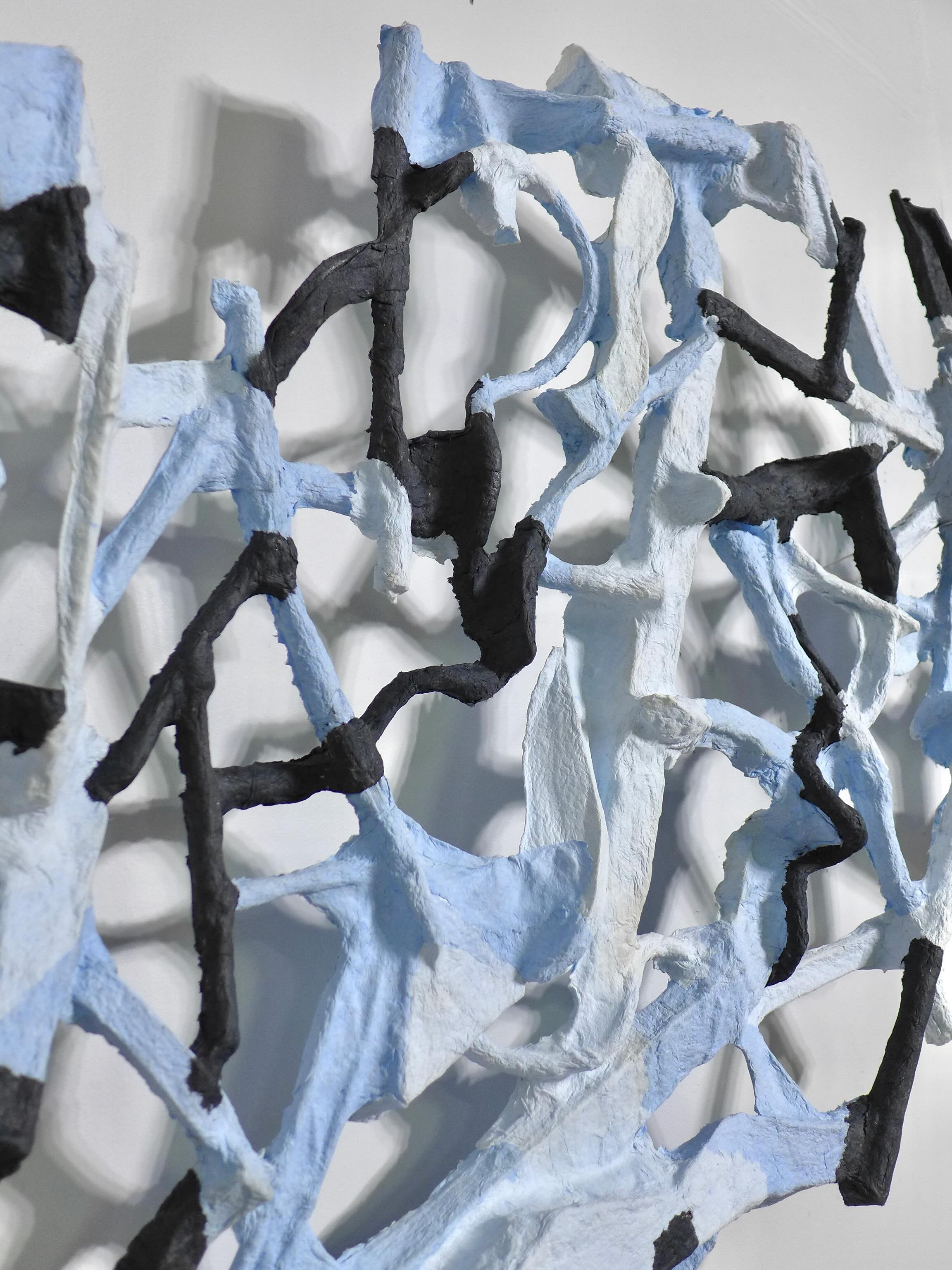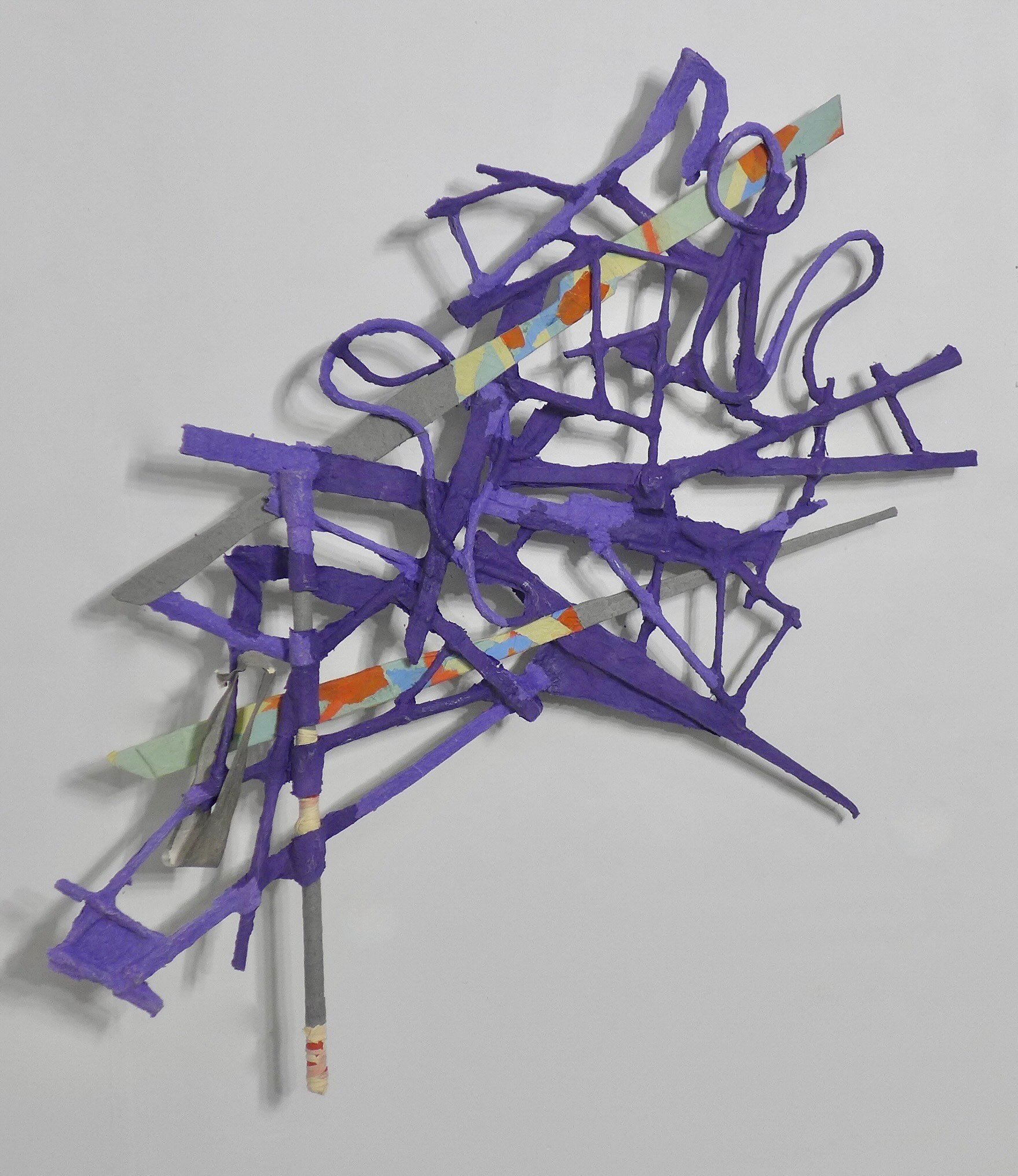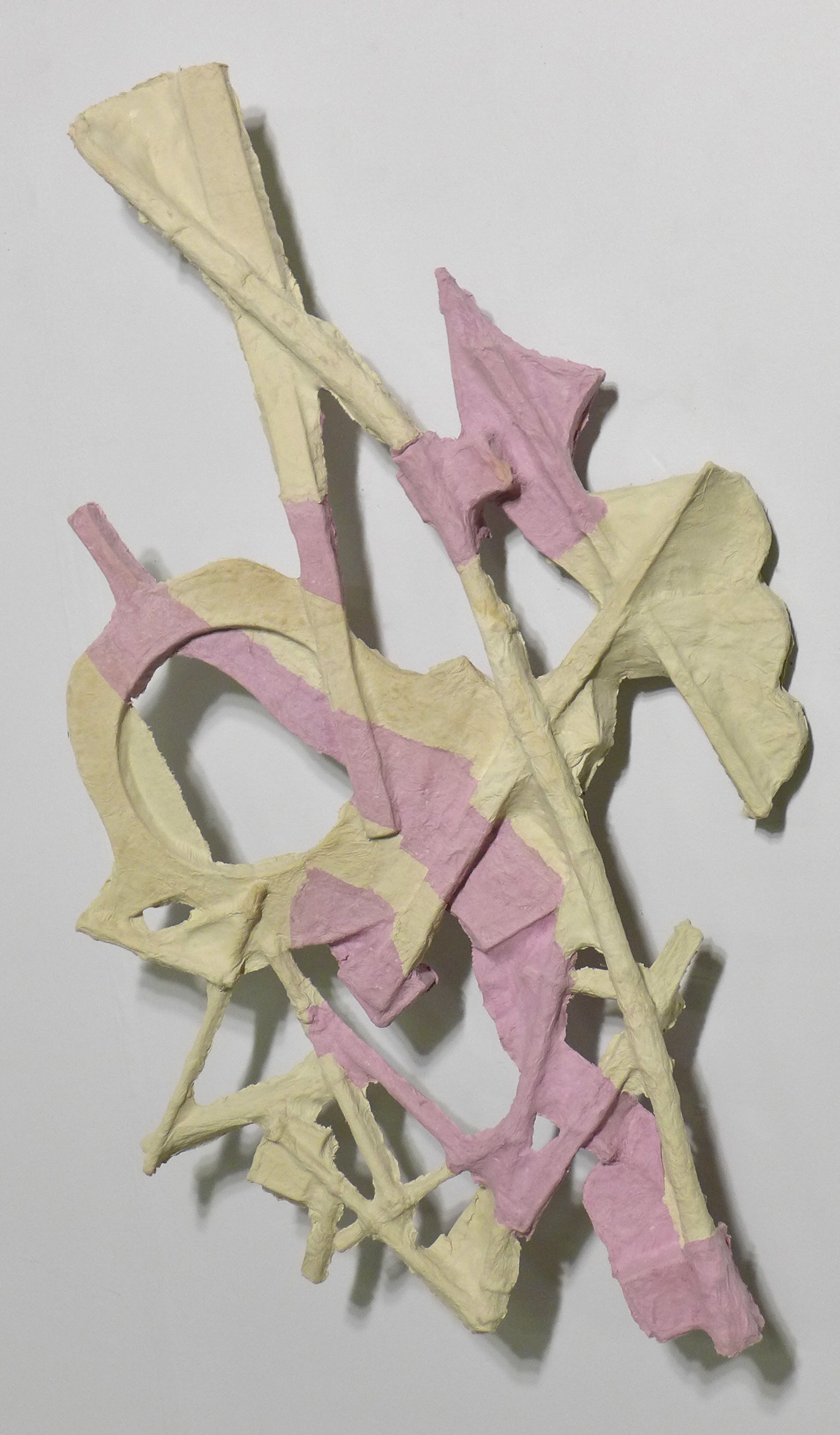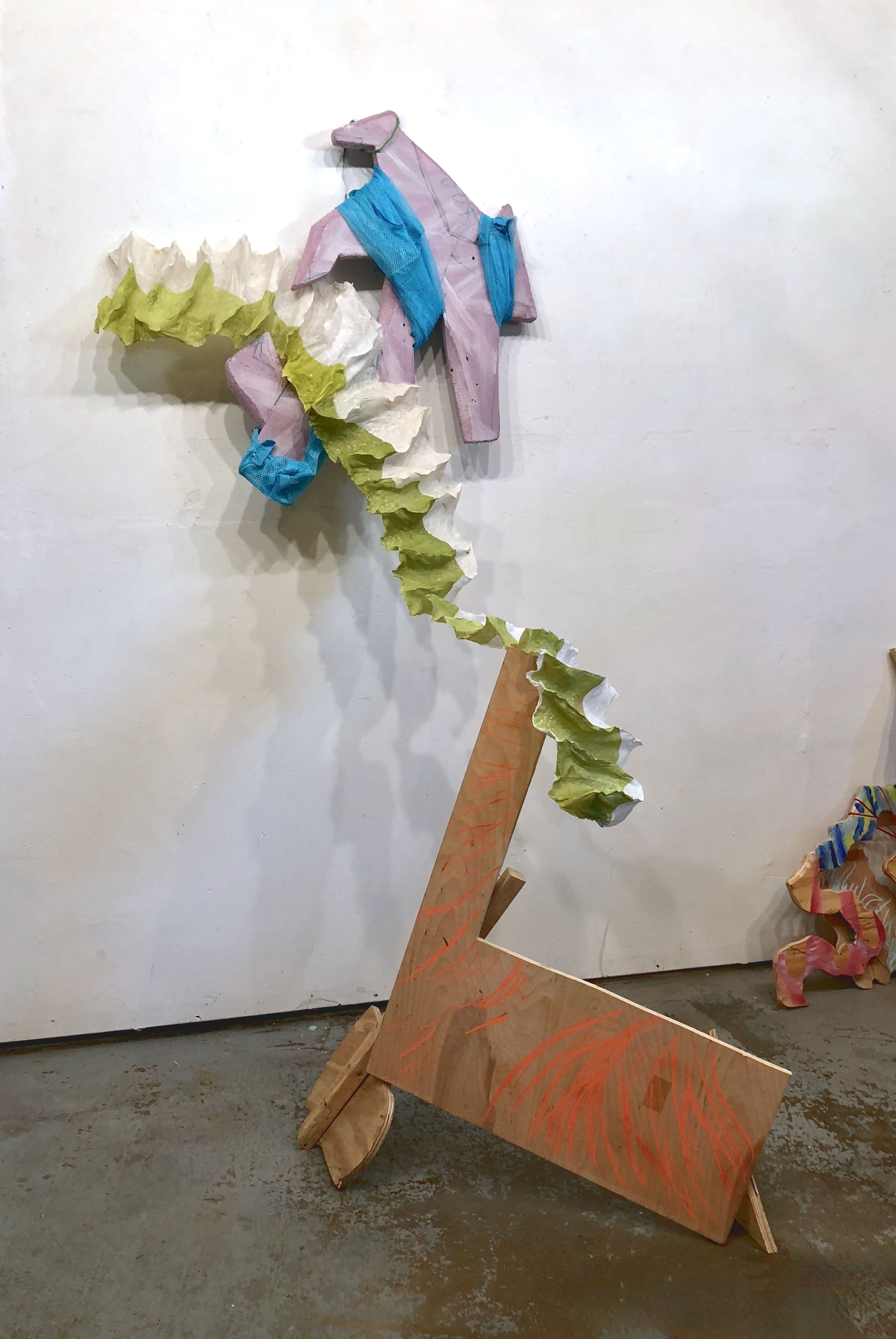Paper Objects
Objects:
• paper & other
Sculptures:
• bamboo & paper
• table top works
• wall & floor
• earlier work
• drawings
Shows:
• Yours unless you stop
• Wait 10 days
• Meaningless & Sure
• We like ‘em like that
• other shows
We use our handmade paper to fabricate objects from which we build our sculptures.
They become like found objects that we reach for again and again when we’re composing.
We use cotton and abaca fibers with some flax occasionally mixed in. The blog talks about how some of these objects are made.
paper tapestries
The objects in the first gallery are mostly cotton rag or linters with pulp paint with occasional pastel and abaca paper. We either start with a single color base layer and then add scraps of other colors and pulp paint. Or we just start with the scraps and build.
relief casts from objects
partially restraint-dried abaca
We prepare abaca to shrink (up to @ 25%) as it dries. When it is restraint dried, the abaca will glow when backlit. We often make the restraint uneven to create effects. The next 2 galleries show some of the results.
The first object is made by laying down patches of cotton (green shapes) on a ground of ochre abaca. Low shrinkage cotton on high shrinkage abaca lead to a puffed up effect. (see blog post for more info as well as the image left)
The next object is a scarf made from abaca cast in folds of no see ’um. The long white & lime piece was cast over the edge of copper sheet. The pink and grey abaca pieces were wrapped around various objects to provide varying restraint in different areas of the abaca sheet. See captions for details on other objects.

Process photo of Barb undoing the wraps and blocks used to allow the paper tapestry to dry in a twisting, wind blown gesture. The pressed but still wet handmade sheets of paper were stenciled, pulp painted and stamped before being pieced together. The whole is then - carefully and gently - shaped, bent, folded and twisted into position to dry. handmade cotton & day lily papers, pulp paint, dimensions as laid flat 7.5’ x 2.5’
inclusions - leaving things in the paper to inhibit shrinkage
We embed bobby pins, bamboo, caning and manila hemp rope to force the overbeaten abaca to dry tautly and provide some structural strength to the resulting object.
LandesSullivan at gmail.com
High shrinkage abaca sheets are cast onto a length of HVAC conduit. Magnets holding to the wire in the conduit restrain the abaca as it dries. The final object is above.



























































































